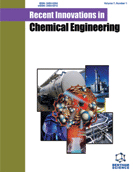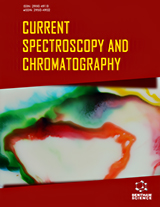Abstract
Zirconia nanocrystals are the best materials to combine with various resins into a transparent high-index composite. Such composite is crucial for the manipulation or enhancement of light in devices such as Organic-Light-Emitting-Diode (OLED) or Liquid- Crystal-Displays (LCD) that surrounds us today. To make a transparent composite, the nanocrystals have to be small (<10nm), un-agglomerated and fully dispersed in resins. They must also be crystalline to provide a better refractive index. Furthermore, since the index of a composite is determined by the volume fraction of the constituents, a substantial increase can only be achieved with a high zirconia loading, usually more than 50wt%. Consequently, the price of zirconia nanocrystals should not be too expensive compared to that of common resins. This requirement excludes many synthesis methods reported in the scientific literatures that employ delicate chemicals or require elaborate procedures. On the other hand, many simpler and large-scale processes for the production of dispersible zirconia nanocrystals have been patented by different companies. A review of the latest development is presented in this paper. Focus is placed particularly on the size, crystalline phase and the dispersibility of the products, as well as on their associated cost.
Keywords: Dispersion, hydrothermal, sovothermal, nano-composite, nanocrystal, refractive index, zirconia.
Graphical Abstract
Recent Innovations in Chemical Engineering
Title:The Production of Dispersible Zirconia Nanocrystals: A Recent Patent Review
Volume: 7 Issue: 2
Author(s): Anthony Shiaw-Tseh Chiang
Affiliation:
Keywords: Dispersion, hydrothermal, sovothermal, nano-composite, nanocrystal, refractive index, zirconia.
Abstract: Zirconia nanocrystals are the best materials to combine with various resins into a transparent high-index composite. Such composite is crucial for the manipulation or enhancement of light in devices such as Organic-Light-Emitting-Diode (OLED) or Liquid- Crystal-Displays (LCD) that surrounds us today. To make a transparent composite, the nanocrystals have to be small (<10nm), un-agglomerated and fully dispersed in resins. They must also be crystalline to provide a better refractive index. Furthermore, since the index of a composite is determined by the volume fraction of the constituents, a substantial increase can only be achieved with a high zirconia loading, usually more than 50wt%. Consequently, the price of zirconia nanocrystals should not be too expensive compared to that of common resins. This requirement excludes many synthesis methods reported in the scientific literatures that employ delicate chemicals or require elaborate procedures. On the other hand, many simpler and large-scale processes for the production of dispersible zirconia nanocrystals have been patented by different companies. A review of the latest development is presented in this paper. Focus is placed particularly on the size, crystalline phase and the dispersibility of the products, as well as on their associated cost.
Export Options
About this article
Cite this article as:
Shiaw-Tseh Chiang Anthony, The Production of Dispersible Zirconia Nanocrystals: A Recent Patent Review, Recent Innovations in Chemical Engineering 2014; 7 (2) . https://dx.doi.org/10.2174/2405520407666150425003612
| DOI https://dx.doi.org/10.2174/2405520407666150425003612 |
Print ISSN 2405-5204 |
| Publisher Name Bentham Science Publisher |
Online ISSN 2405-5212 |
 19
19
- Author Guidelines
- Bentham Author Support Services (BASS)
- Graphical Abstracts
- Fabricating and Stating False Information
- Research Misconduct
- Post Publication Discussions and Corrections
- Publishing Ethics and Rectitude
- Increase Visibility of Your Article
- Archiving Policies
- Peer Review Workflow
- Order Your Article Before Print
- Promote Your Article
- Manuscript Transfer Facility
- Editorial Policies
- Allegations from Whistleblowers



















